Text
‘How to “Host” History-Making’ by Katherine Finerty

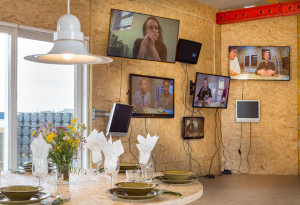

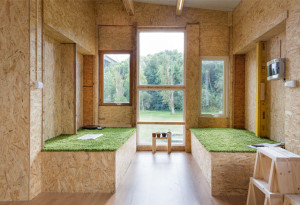

Extended essay about ‘House of Words (HoW)’ - an architectural, process-based artwork by architecture collective Recetas Urbanas and artist Loulou Cherinet in collaboration with Public Art Agency Sweden and Gotëborg International Biennial for Contemporary Art (GIBCA 2015)
House of Words (HoW) was apart of The Göteborg International Biennial for Contemporary Art (GIBCA) 2015 – A story within a story… curated by Elvira Dyangani Ose. It adhered to GIBCA’s theme by highlighting artists’ works that broaden our interpretation of history and historiography, and was open from 12 September – 22 November 2015 as a parasite treehouse connected to the Röda Sten Konsthall, Gothenburg.
What was HoW?
HoW was comprised of 3 parts:
-
A pavilion – an architectural structure – designed by architect and activist Santiago Cirugeda / Recetas Urbanas and is built through a collective process with a diverse range of participants.
-
A participatory function – all who visited HoW were encouraged to interact with and influence the project, based on a concept produced by artist Loulou Cherinet.
-
A participatory programme – a socially engaged initiative inviting citizens to have a dialogue about the city of Gothenburg’s visible and invisible borders.
The concept behind HoW referred to a type of traditional meeting place called ‘la Casa de la Palabra’ which is commonly found in many African and South American societies.
The participatory programme’s core was the exchange of micro-histories – experiences, themes and stories that are usually overlooked in the established historiography. It built a connection between Gothenburg’s inner city and its outer suburbs, as well as connected Sweden with rest of the world, allowing for a diversity of voices and perspectives to contribute toward a practical history-making.
With inspiration from anthropologist Michel-Rolph Trouillot’s ideas surrounding ‘unthinkable’ history, GIBCA will explore how different power systems have used oblivion and silence as a political strategy.
– Elvira Dyangani Ose, Curator for GIBCA 2015
The Göteborg International Biennial for Contemporary Art (GIBCA) 2015 – A story within a story… embodied the notion of history as a collective and radical act. History here was not framed as something that can be found in a textbook, or told by ‘the winners.’ Rather, it was framed as a communication by all who partake in its experience, thereby declaring history itself as intrinsically a participatory experience. House of Words refers to ‘la Casa de la Palabra’ – a traditional meeting place common in some African and South American communities providing a hub for oral history, storytelling, performance, and ritual. GIBCA 2015’s HoW functioned as a social platform for multidisciplinary discussion, exchange, and collaboration throughout the course of the biennial and beyond. Participatory practices were able to create an activated social space whereby the notion of ‘publicness’ is ultimately framed through a powerful sense of ‘togetherness’…
Yet how did this initiative create something substantial and sustainable, despite its time and site-specific nature? Ultimately, the point of House of Words was to create an assembly – a space for everyone to galvanise a distinctly collective and democratic identity, together. This open platform worked to create a completely new kind of institution – a space for genuine social dialogue focusing on all aspects of life, expanding beyond the status of art and high culture. HoW’s creation was dependent on research and collaboration initiatives that started long before A story within a story…, and it was therefore our aspiration that the storytelling it enabled would last long after. House of Words (HoW) is thus not only a place for hosting and history-making – it is ultimately a place for hope.
– Katherine Finerty, Curatorial Assistant for GIBCA 2015

Related

Event
[POSTPONED] In-conversation: Affection As Subversive Architecture
, –
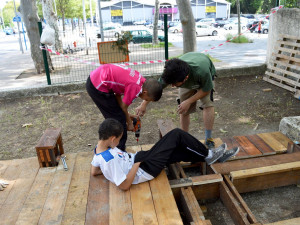
Event
[POSTPONED] Working Group 1: Right To Build – Children as Makers and Users
, –
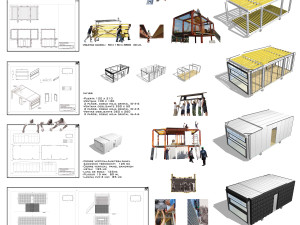
Online
Digital Digging: Recetas Urbanas’s Data Sheets
, –
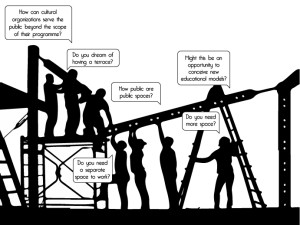
Exhibition
Recetas Urbanas: Affection as Subversive Architecture – Unauthorised Entry Permitted
–
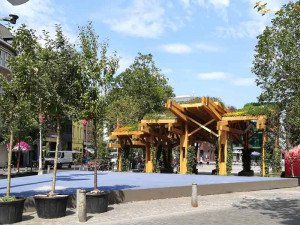
Video
Recetas Urbanas: Green Mountain
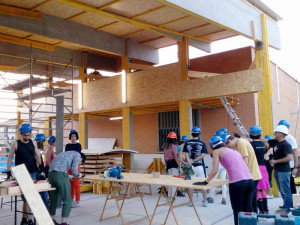
Video
Recetas Urbanas: Conviviality Room Project – Mum, when I grow up I want to build like you

Text
‘Affection as a Subversive Architectural Form’ — Elvira Dyangani Ose and Raúl Muñoz de la Vega in conversation
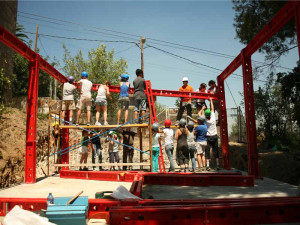
Video
Recetas Urbanas: The Tretzevents Self-building Workshop
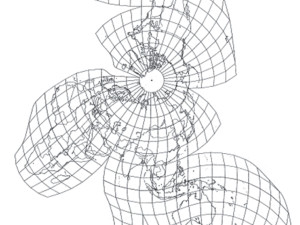
Text
Blanca Pujals: ‘Bodily Cartographies: Pathologizing the Body and the City’